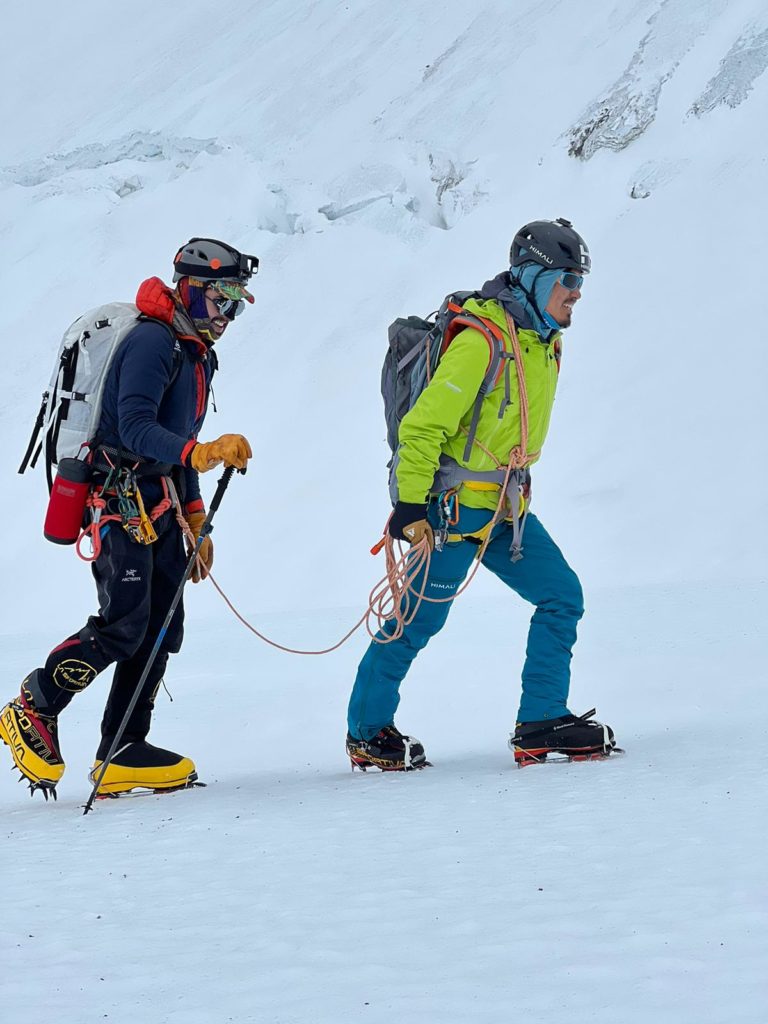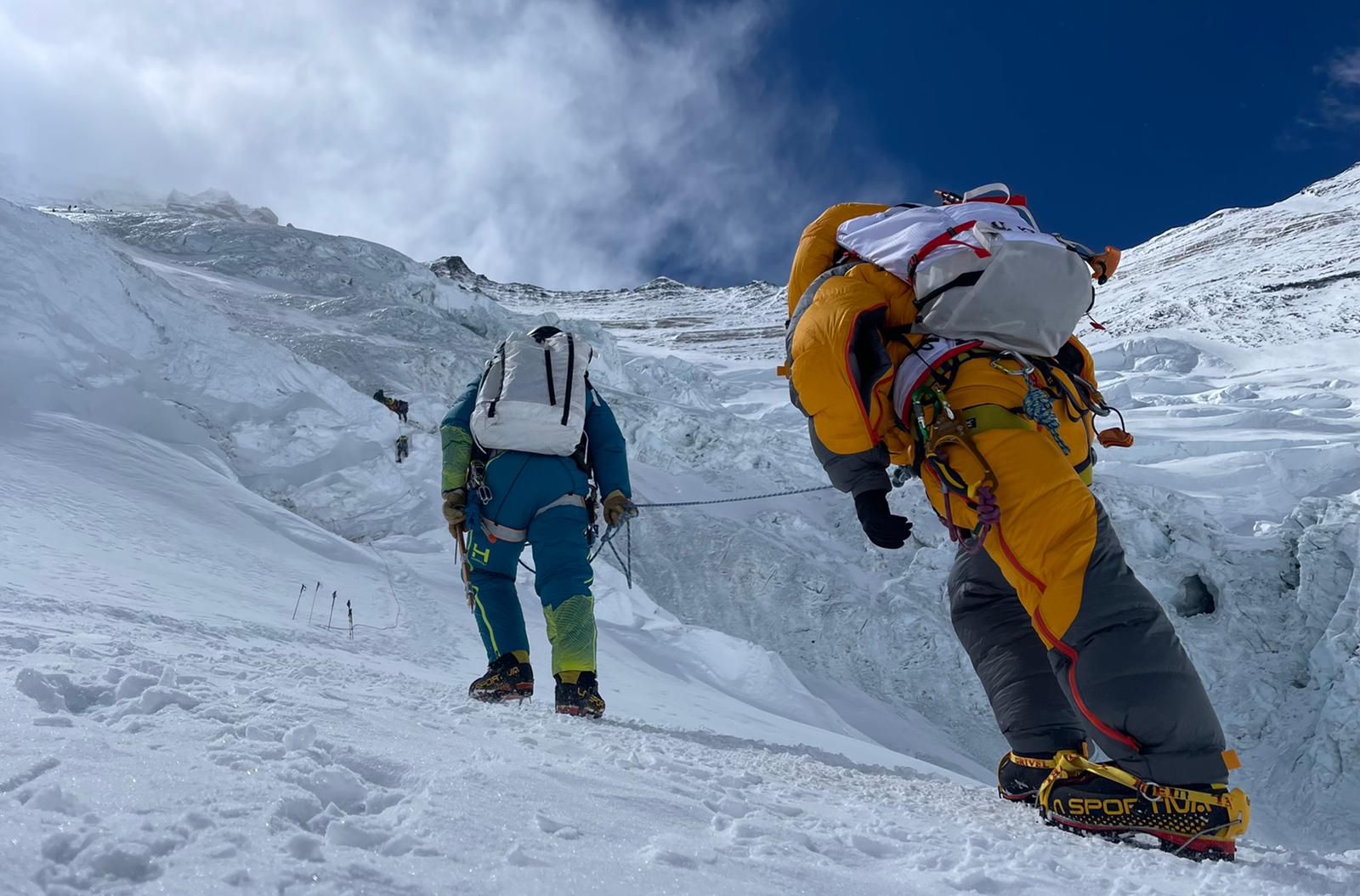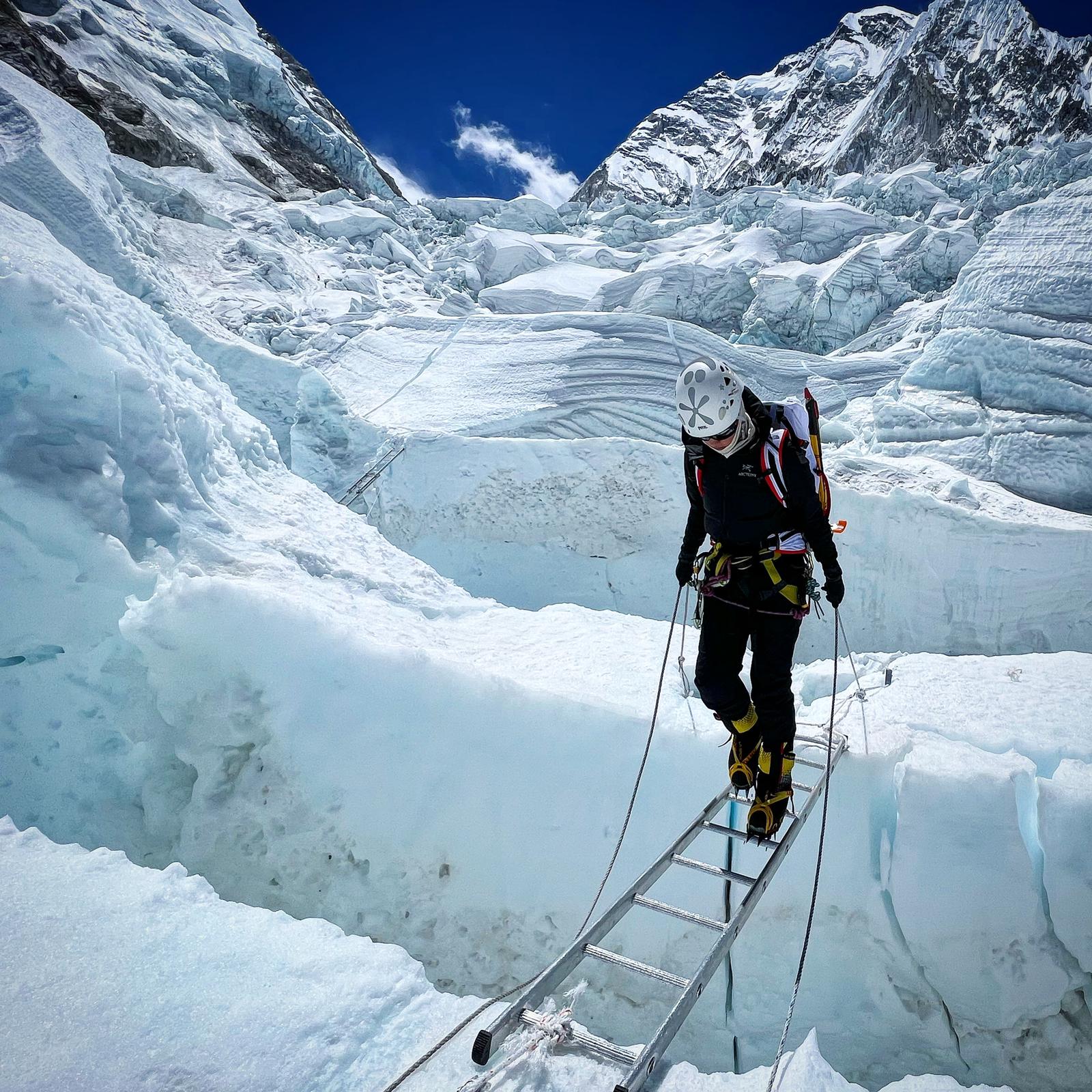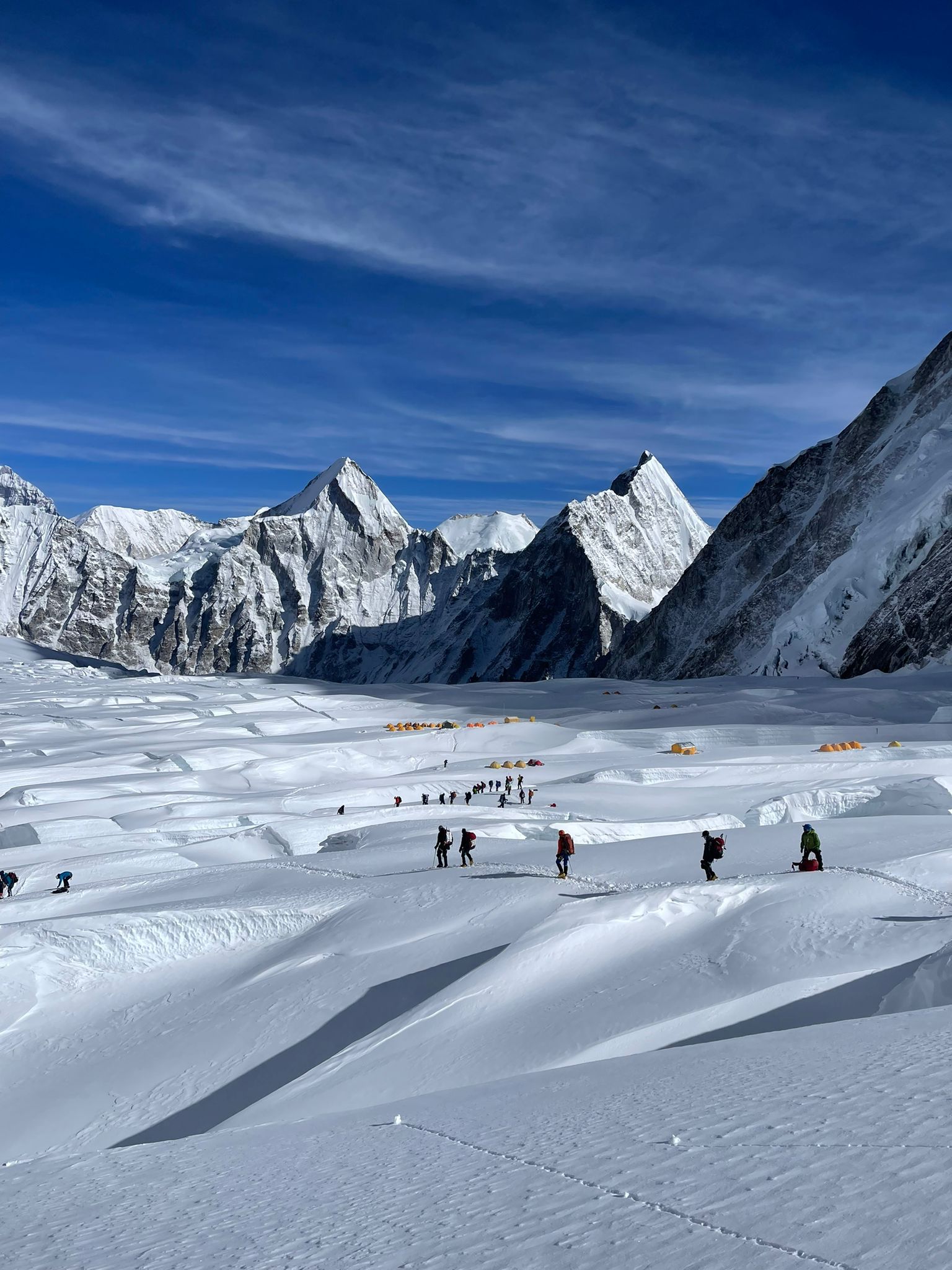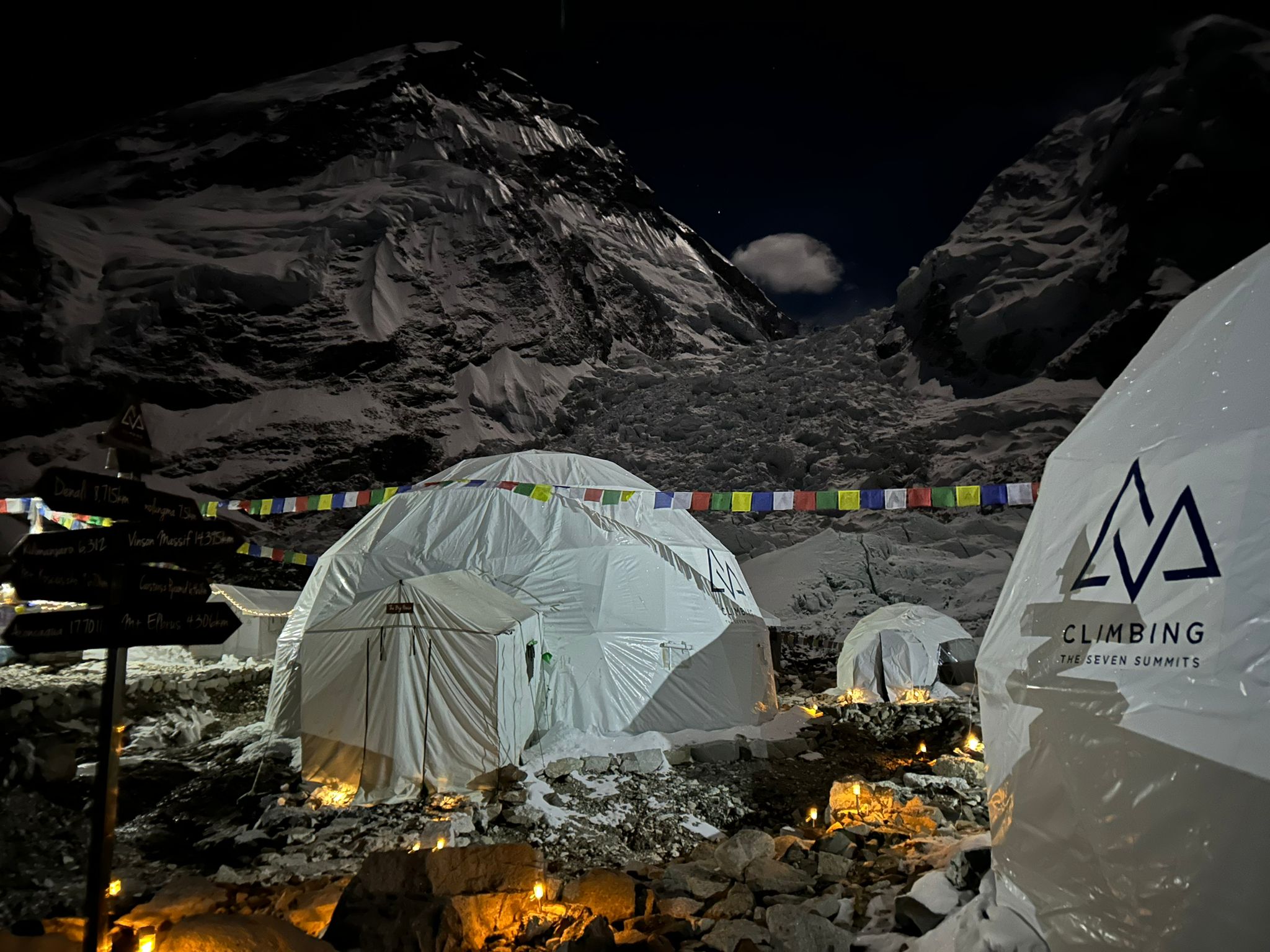First Summit Team Safely Back to Camp
All of our 26x 17th May summit climbers, guides and sherpa have returned to the relative safely to the South Col where they will rest tonight on oxygen, before dropping down to Camp 2 in the morning.
Feeling strong, Olivier and Casey, Ben S, Bruce Mc and Schuyler E have already come down to Camp 2 and we expect to welcome them back to Base Camp tomorrow.
Roberto T & Kevin C will remain at the Col and scale the Lhotse Couloir tomorrow morning attempting to summit Lhotse before descending to Camp 2.
Our climbers hard work and peresistence has paid off for them and a life goal has been achieved. This is their day and we are proud to support them in their great accomplishment.
Cheers
CTSS Team
17th May 26x SUMMITS
Morning of the 17th May
Good evening/morning everyone!
It's with great delight that we bring you the summit news of the day...
Summit Congratulations to 26x climbers including:
- Olivier Thiriet - France
- Casey Grom - USA (Guide)
- Pemba Gyalji Sherpa - Juving, Nepal (Guide)
- Ben Stern - USA
- Bruce McCadie - Canada
- Schuyler Evans - UK
- Enrique Claussen - Uruguay (Guide)
- Roberto Terzini - Brazil
- Pasang Tendi Sherpa - Juving, Nepal (Guide)
- Kevin Cagney - USA
- Ashish Gurung - Sankhuwasabha, Nepal (Guide)
- Taylor Grist - USA
- Naren Shahi - Lamjung, Nepal (Guide)
- Mark Postle - USA
- Abdulrazzaq Almojalhem - Kuwait
- Vinayak Jay Malla - Myagdi, Nepal (Guide)
- Pemba Sherpa (Karli) - Juving, Nepal
- Nima Sherpa - Salung, Junbeshi, Nepal
- Ang Chhiring Sherpa - Thame, Nepal
- Chiyang Jyabu Bhote - Sankhuwasabha, Nepal
- Dawa Furten Bhote - Sankhuwasabha, Nepal
- Rinchen Sherpa - Juving, Nepal
- Ngima Dorje Sherpa - Juving, Nepal
- Chheden Bhote - Sankhuwasabha, Nepal
- Nawang Chhiri Sherpa - Phortse, Nepal
Cheers
CTSS Team

Off to the Summit
Our first wave of summit climbers have left the South Col (Camp 4) and begun their final push to the top of the world! The wind has dropped as expected and the team have a great summit day, perhaps a bit overcast but calm.
On their way;
- Kirstie E with Guide Anup
- Zukey with Guide Vinay
- Ben S, Bruce McC, Schuyler E with Guides Quique and Pemba Geljie
- Kevin with Guide Ashish
- Roberto with Guide Pasang
- Olivier with Guide Casey
- Mark Postle
- Taylor G with Guide Naren
They have a long day ahead of them and will pull full focus on their climb so expect to hear very little news today. We know it can be stressful to wait anxiously for news so our best advice is to keep busy today and we will announce summits as they happen. Remember no news is good news, Guides will very often conserve radio and satellite phone batteries for emergencies etc. You can expect them to spend 15- 30minutes on the summit before putting the foot on the gas to come back down, so it's likely that we won't hear from them again until they are back at the South Col.
If you would like to "see" what they are climbing check out these route videos on Youtube: https://youtube.com/playlist?list=PLMz_kRmPTvqUjpcgqswdV2RbxOYWU38z6
Matt B with Guide Kami is at the South Col and will take a rest there tonight and tomorrow. They will shortly be joined by our second wave of climbers who are sleeping at will make their way up from Camp 3 tomoo to follow with their summit bid tomorrow;
- Ludivine L
- Damian M (Lhotse summiter)
- Sam C
- Ott T
- Jen W
- Rajat S
- Travis V
- Rohan M
At Base Camp resting is Julie M ahead of her summit bid planned for the 22nd - 24th May.
Cheers
CTSS Team





Up the Lhotse Face
Evening of the 15th May (local Nepal time)
Our teams are doing so well on their summit rotation.
At Camp 3, having climbed part of the Lhotse Face today, we have our first wave of summit climbers and guides including:
- Western Guided Team Climbers (Bruce McC, Ben S, Schuyler Evans with Guides Quique Claussen and Pemba Gelji
- Kevin C and Guide Ashish
- Roberto T and Guide Pasang
- Olivier and Guide Casey
- Mark Postle
- Tom L and Guide Tomi C
- Matt B and Guide Kami
- Taylor G and Gude Naren
- Kirstie E and Guides Anup and Kami Temba
They will sleep on oxygen tonight, before waking up to continue to climb the remainder of the Lhotse Face, up through the Yellow Band and into the South Col. There is a bit of wind in the forecast for tomorrow up to the Col, and it can be windy there, but looking very good for their planned May 17th summit.
Just a day behind them, our second wave of summit climbers and guides are sleeping at Camp 2 tonight and will move up to Camp 3 tomorrow; including
- Ludivine L and Dawa Jungbu
- Damian M (Lhotse) and Doma Chhiri Sherpa
- Sam C and Thu Nang
- Ott and Guide Dorjee
- Jen W and Guide Big Pasang
- Rajat and Guide Pega
- Zukey & Guide Vinay
- Lisa B & Guide Prakash
- Travis & Guide New Tendi
- Rohan F with Guide Sujan
Julie M is safely back to Base Camp where she will rest and recover for a good few days before making her summit rotation.
Cheers
CTSS Team
Photos from the CTSS archives
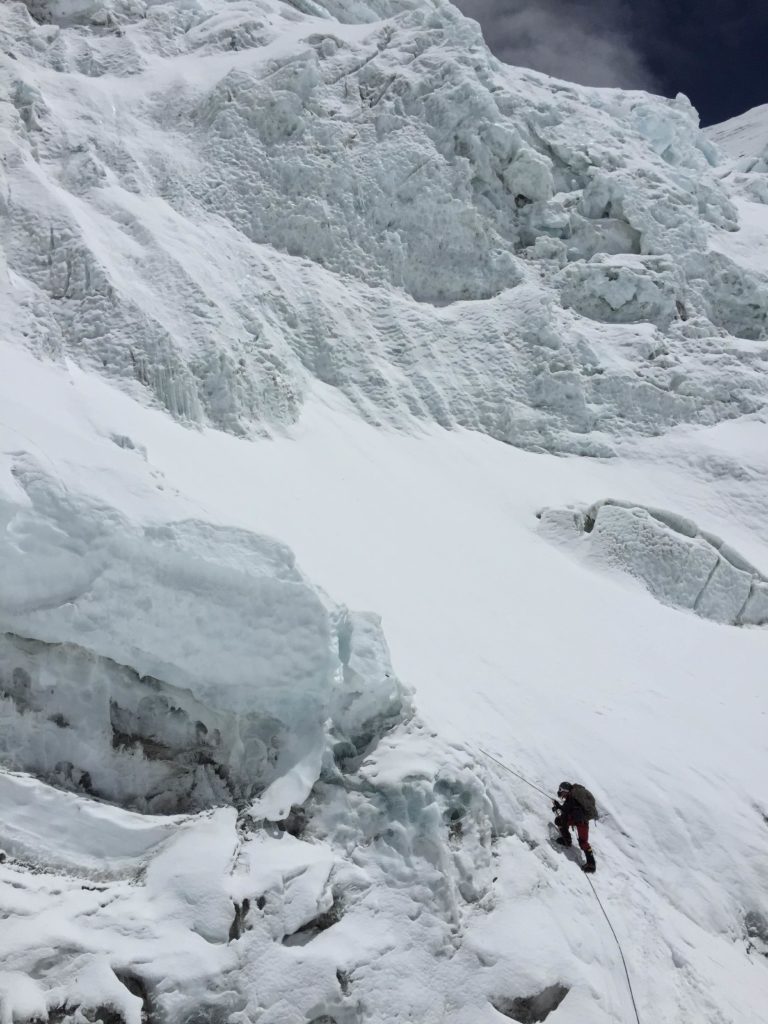
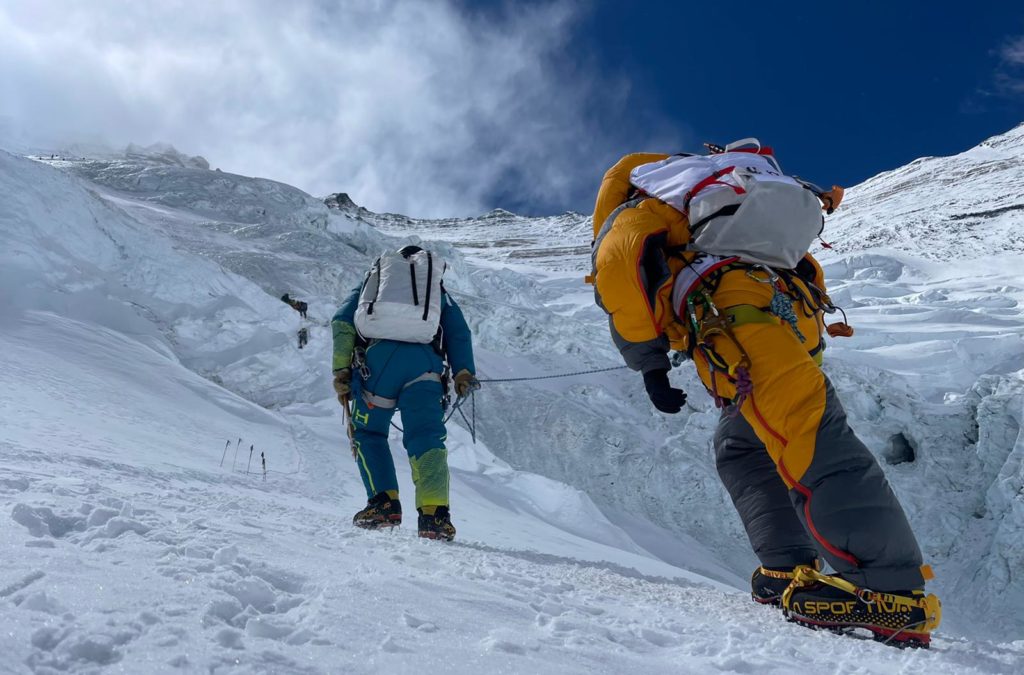
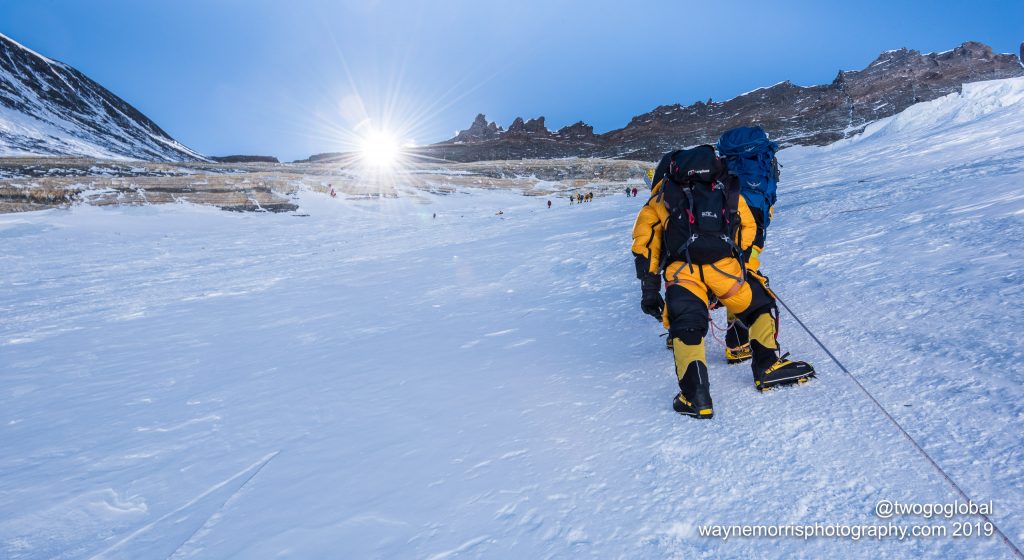
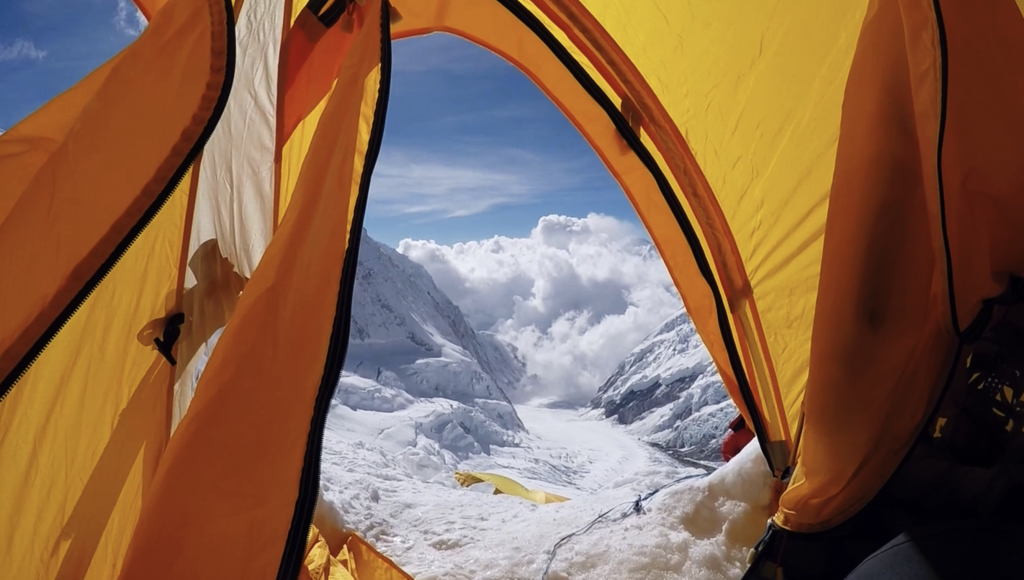
Happy Mother's Day from Everest!
Evening of the 14th May - Happy Mothers' Day!
Wishing all the moms following on a very Happy Mother's Day! We know that it is always a tough being away from your sons and daughters as they pursue their dreams in the high mountains. It is your endless support and love that enables them to achieve these great goals and the accolades for their success rest not only with them, but you! We hope you have a wonderful day today.
A quick update from the mountain for you all.
Down low we have some afternoon flurries of snow but nothing to impede our climbers, and most importantly the winds have dropped. Our teams are aiming for summits on the 17th & 18th which are looking like the best period for low winds so far. They are well positioned and feeling strong.
In our first wave of summit bid climbers, we have our Western Guided Team Climbers; Bruce McC, Ben S, Schuyler E with Guides Robert J, Quique Claussen and Pemba Geljie. Alongside them our Private 1:1 Climbers; Kevin C & Guide Ashish, Roberto T and Guide Pasang, Olivier and Guide Casey, Mark Postle, Tom L & Guide Tomi, Matt B & Guide Kami, Taylor G & Guide Naren, Kirstie E and Guides Anup & Kami Temba. That group took a rest day today at Camp 2 and tomorrow they will climb the Lhotse face up to Camp 3 and then up to the South Col the following day.
Our second team, will move up from Camp 1 through the Western CWM to Camp 2 tomorrow, so at camp 2 by tomorrow night, we will have Ludivine L, Damian M, Sam C , Jen W, Rajat, Ott, Lisa B, Travis, Rohan and Zukey., They will then move up to Camp 3 the following day with the intention of an 18th May summit.
Julie M is finishing her long rotation and will be returning to Base Camp tomorrow to rest for a few days before returning to the upper mountain on her summit bid between the 22d - 24th May.
All is well with the team and everyone is well positioned and feeling positive.
Cheers
CTSS Team

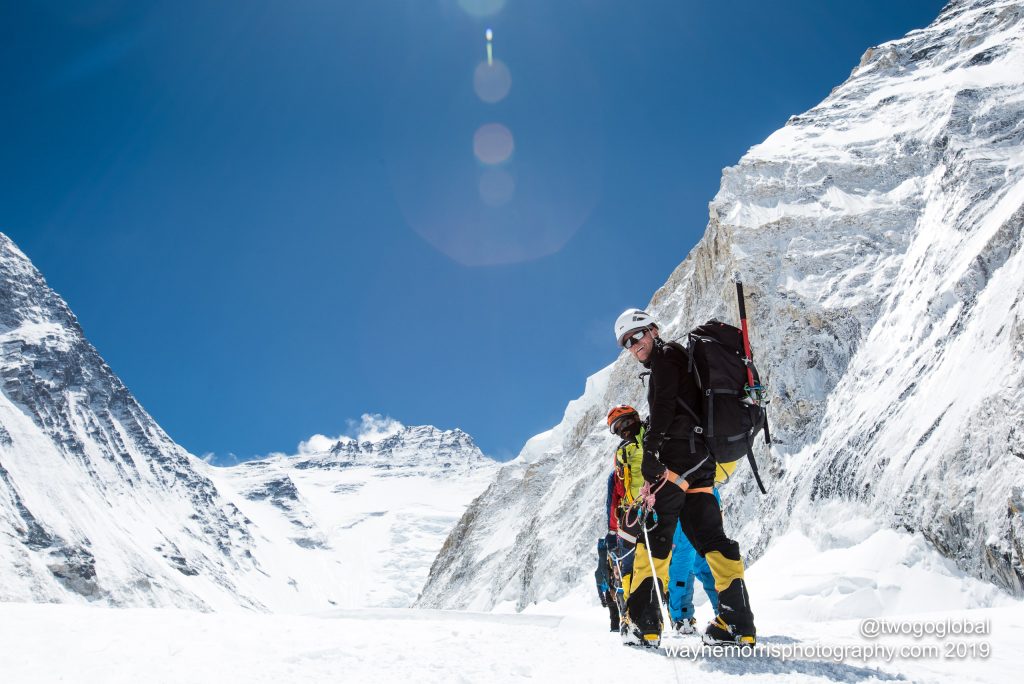
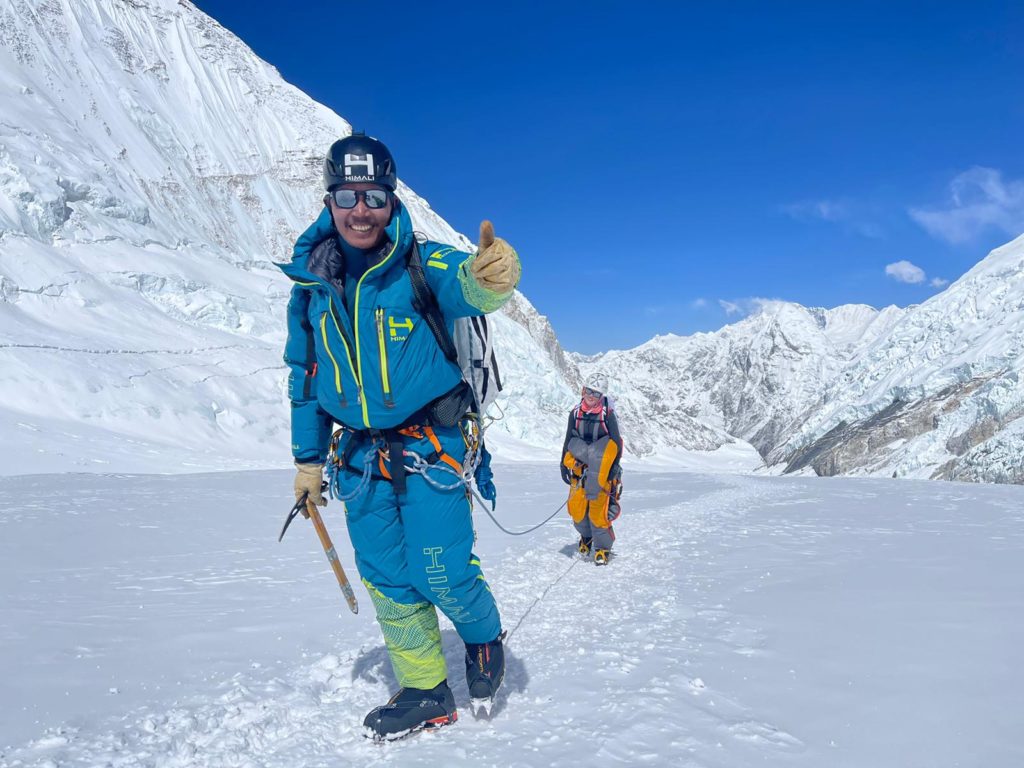
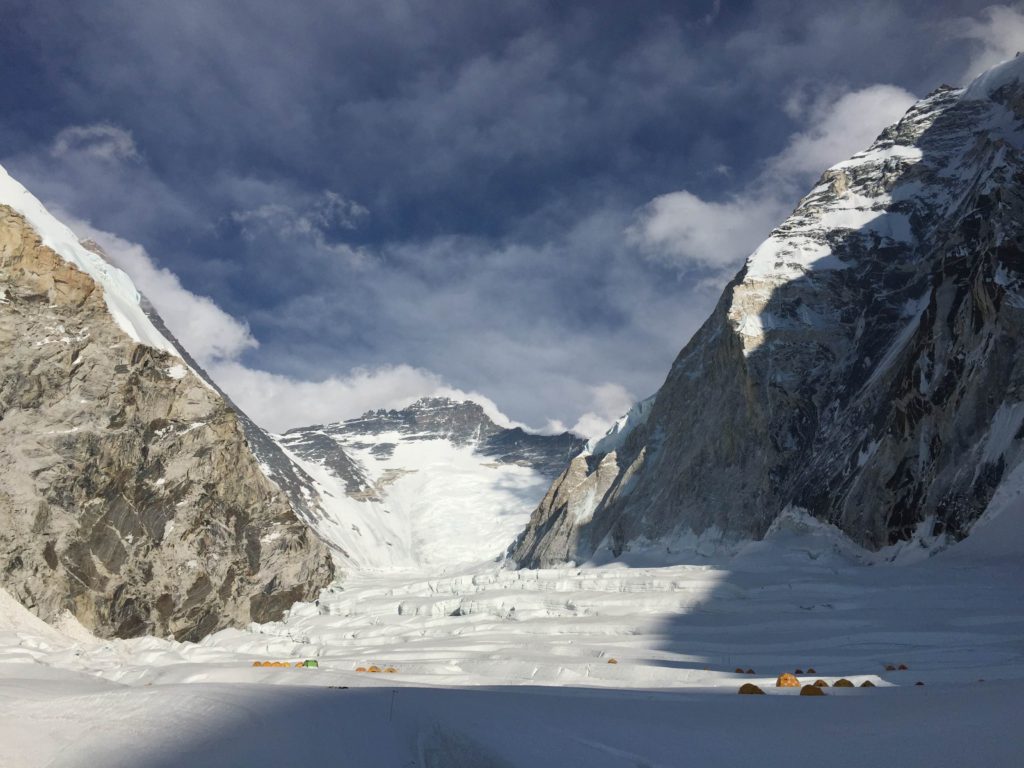
Summit Bid Progression
13th May
Our teams are on the move! We have two waves of Everest and Lhotse climbers headed up onto the mountain for their summit bids. The first left yesterday morning and the second will leave tonight. We will continue to re-evaluate the weather in the coming days to time summit day with the best overall conditions.
The first team (including Bruce McC, Ben S, Schuyler E with Guides Robert J and Quique Claussen. Kevin C & Guide Ashish, Roberto T and Guide Pasang, Olivier and Guide Casey, Mark Postle, Tom L & Guide Tomi, Matt B & Guide Kami, Taylor G and Guide Naren, Kirstie E and Guides Anup and Kami Temba) moved to C2 this morning with Ludivine L, Damian M, Sam C, Jen W now at Camp 1 . There is still a bit of breeze up high but the jet stream has moved away from the summit and it is much less than over the past week.
Camp 2 will act as an advanced base camp for our teams before attacking the upper mountain. Our Sherpa team will finish stocking the South Col with oxygen, tents, etc over the next 2 days.
Our second team; Rajat with Guide Pega, Ott with Guide Dorjee, Lisa B with Guide Prakash, Travis with Guide New Tendi and Rohan with Sujan, will leave early hours of the morning (14th) to head up to Camp 1.
Julie M is at C2 finishing her final rotation and will come back to Base in comingi days to rest ahead of a 22nd - 24th May summit bid.
All is well with the team and wish us luck on our summit bids!
Cheers
CTSS Team
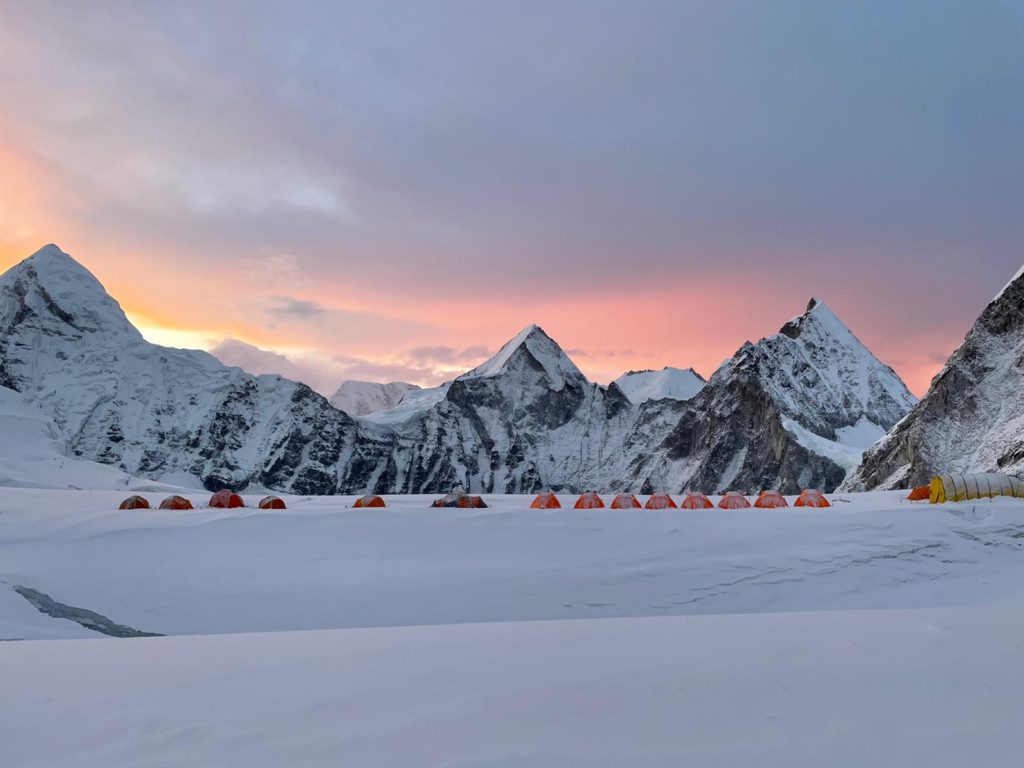


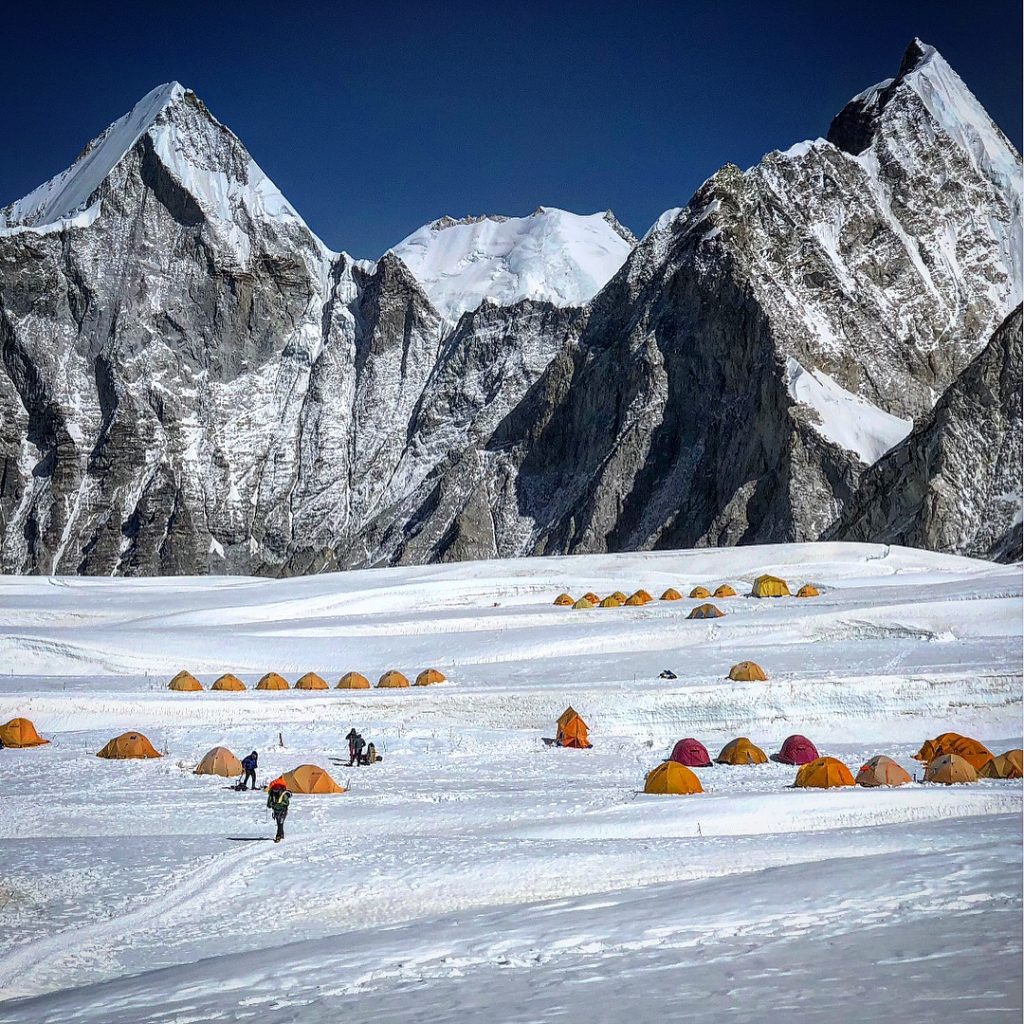
Summit Bids Underrway
12th May
After such incredible patience waiting for the winds on the upper mountain to abate and the right weather window to appear, the time has finally come and a number of our team have just launched into their summit bids.
Leaving Base Camp, this morning and already reaching Camp 1 we have:
- Western Guided Team - Led by Quique Claussen, Robert Jantzen and Pemba Geljie, are Bruce McC, Ben S & Schuyler E
- Kevin C and Guide Ashish
- Roberto T and Guide Pasang Tendi
- Olivier T & Guide Casey
- Mark Postle
- Tom L and Guide Tomi Ceppi
- Matt B and Guide Kami
- Taylor G and Guide Naren
- Kirstie E, Rob G and Guide Anup
At Base Camp preparing for their summit rotation, Sam C, Rajat S, Lisa B, Jen W, Ott T, Ludivine L, Rohan F, Damian M, Zukey and Travis.
Finishing her final rotation is Julie M, who will come down and rest for a few days before she also launches into her summit bid.
After a year or more of training, huge personal and family sacrifices made, these climbers are not only determined but also so excited that their moment has come and game day is here. We are wishing them all enormous luck, they deserve every success.
For those of us at home, this is always a time full of mixed emotions as our loved ones pursue their life long goals. Please remember that no news is good news, time can feel like it moves slowly in the mountains and there are still days of climbing ahead of them.
All is well on Everest today.
Cheers
CTSS Team
Photos from the CTSS archives
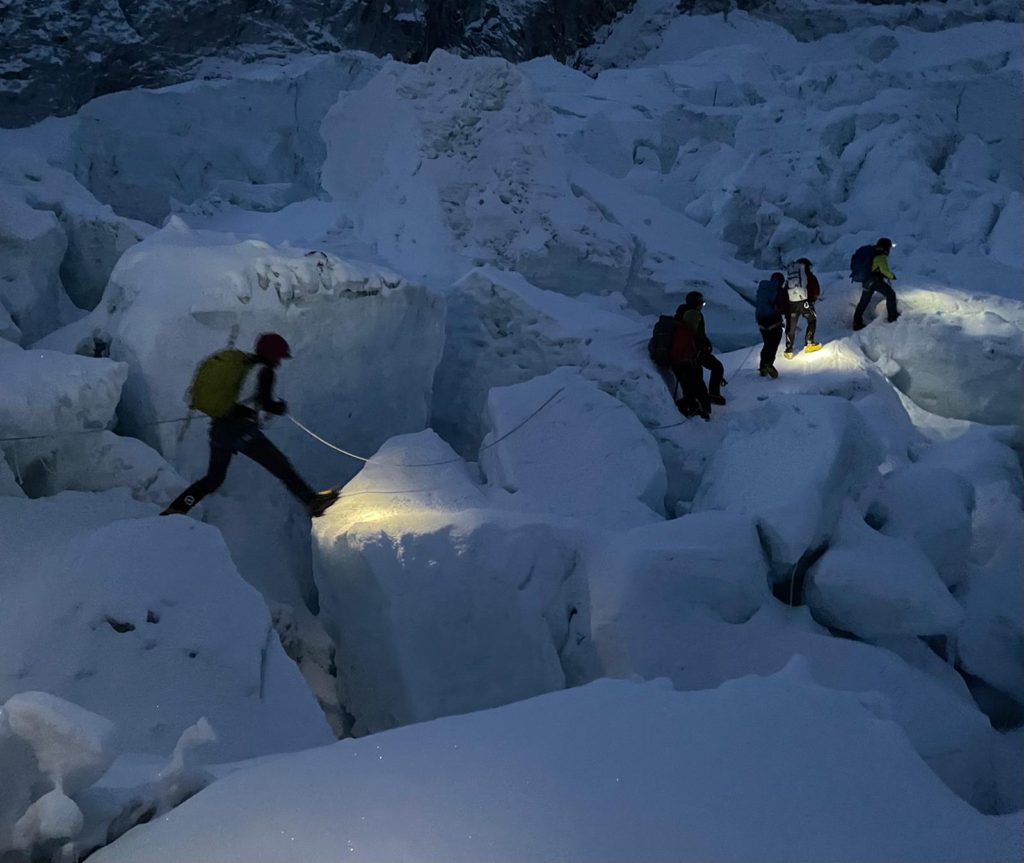

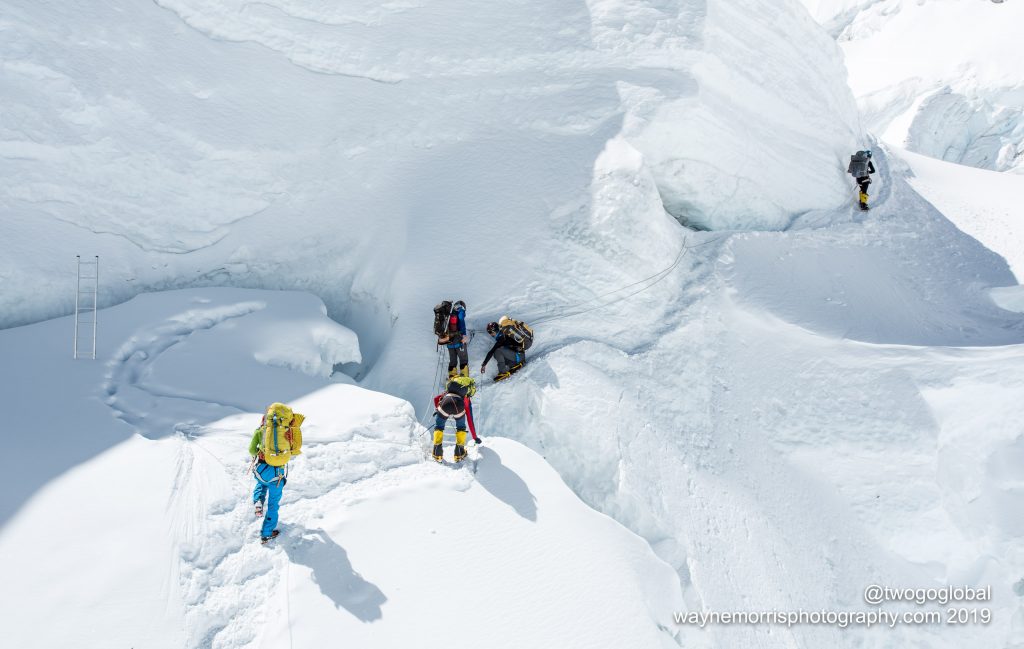
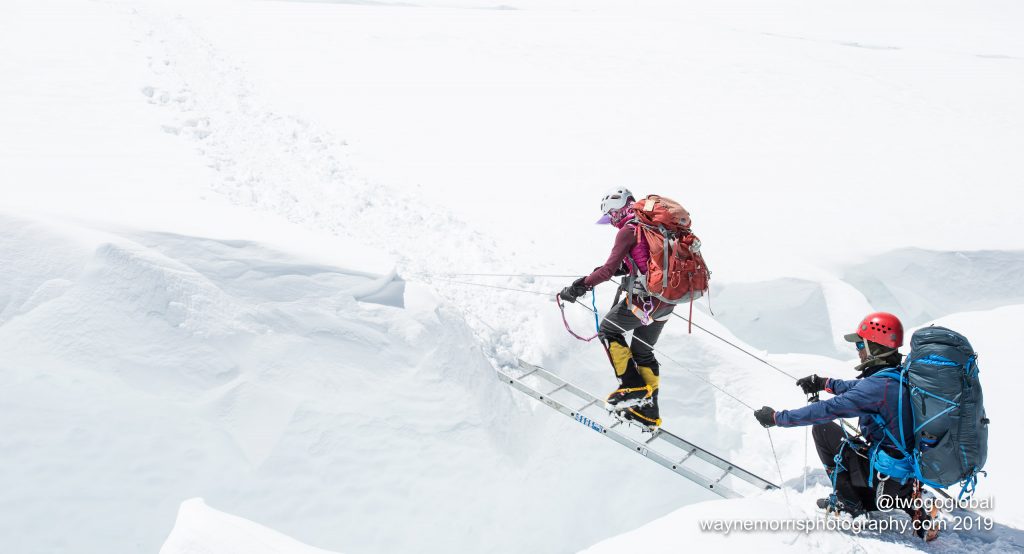
Second Rotations & Patience
The team are doing great. Many of them are now ready for their summit bid but are happily being patient as we wait for the high winds on the upper mountain to abate. The table tennis tournament is heating up with the finals tomorrow!
Finishing their second rotation, Travis and Guide New Tendi hit their goal of Camp 3 and returned to Base Camp today, the rest of the team will tag Camp 3 or the base of the Lhotse Face.
Kirstie & Rob moved from Camp 1 up to Camp 2 and Martin and Mingma Dorjee did an acclimatization hike towards Camp 2 returning to Camp 1 for the night.
Back at Base the majority of the crew are resting, training and ice climbing, with Kevin, Robert J and Damian enjoying their dropback in Lukla. Neil F has been really enjoying his hike down valley towards Lukla and he'll fly back to Kathmandu shortly.
We are looking forward to the next few weeks as we position for our summits but all is well on Everest.
Cheers
CTSS Team
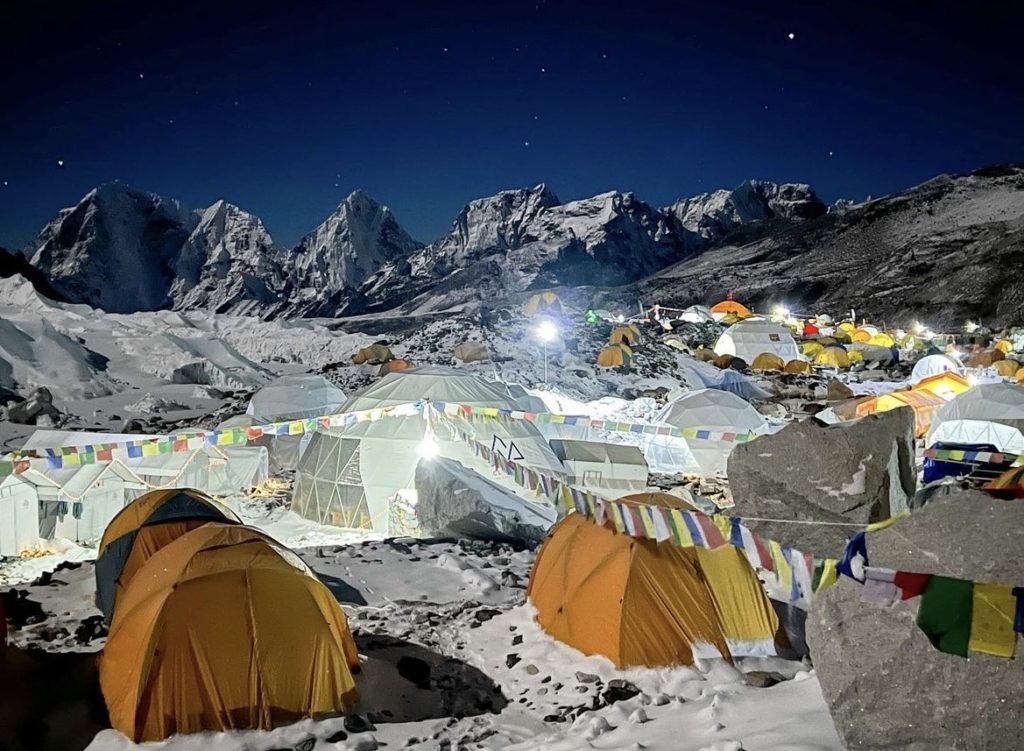
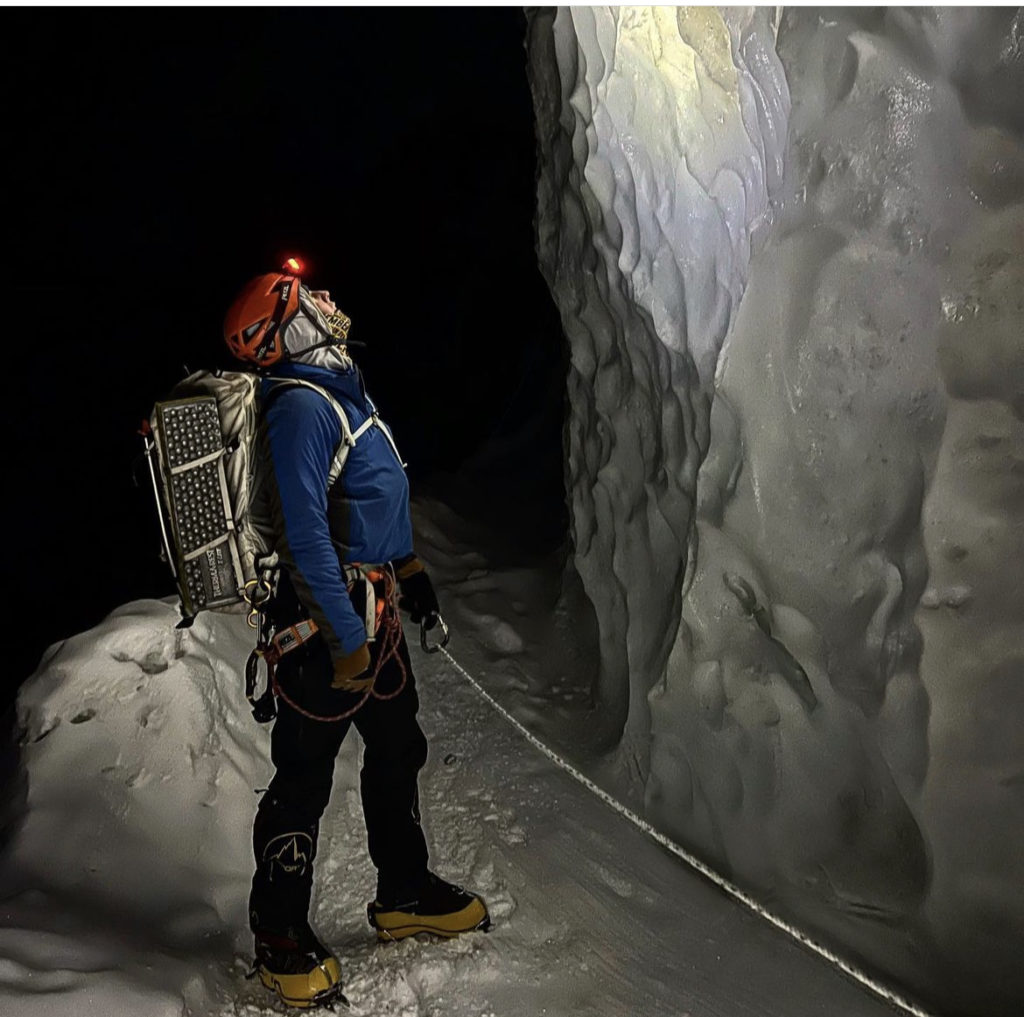
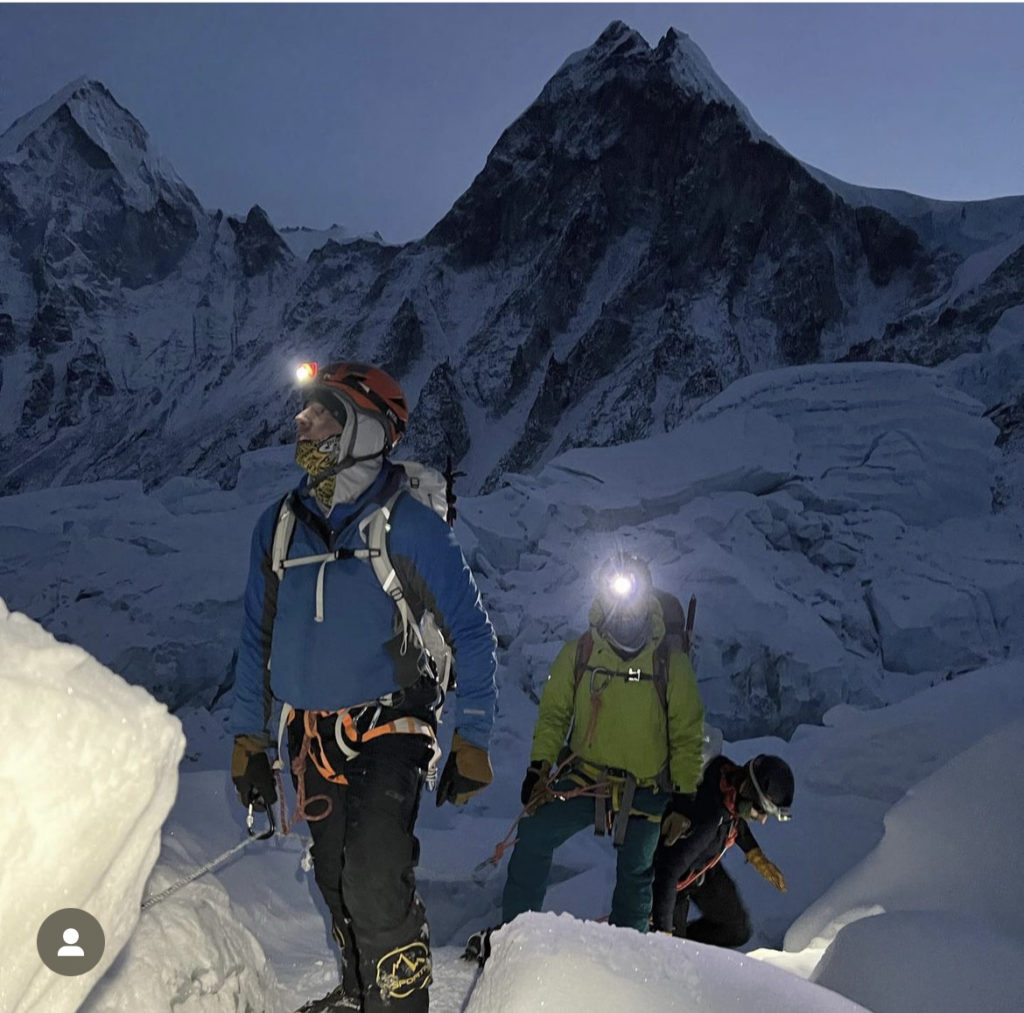
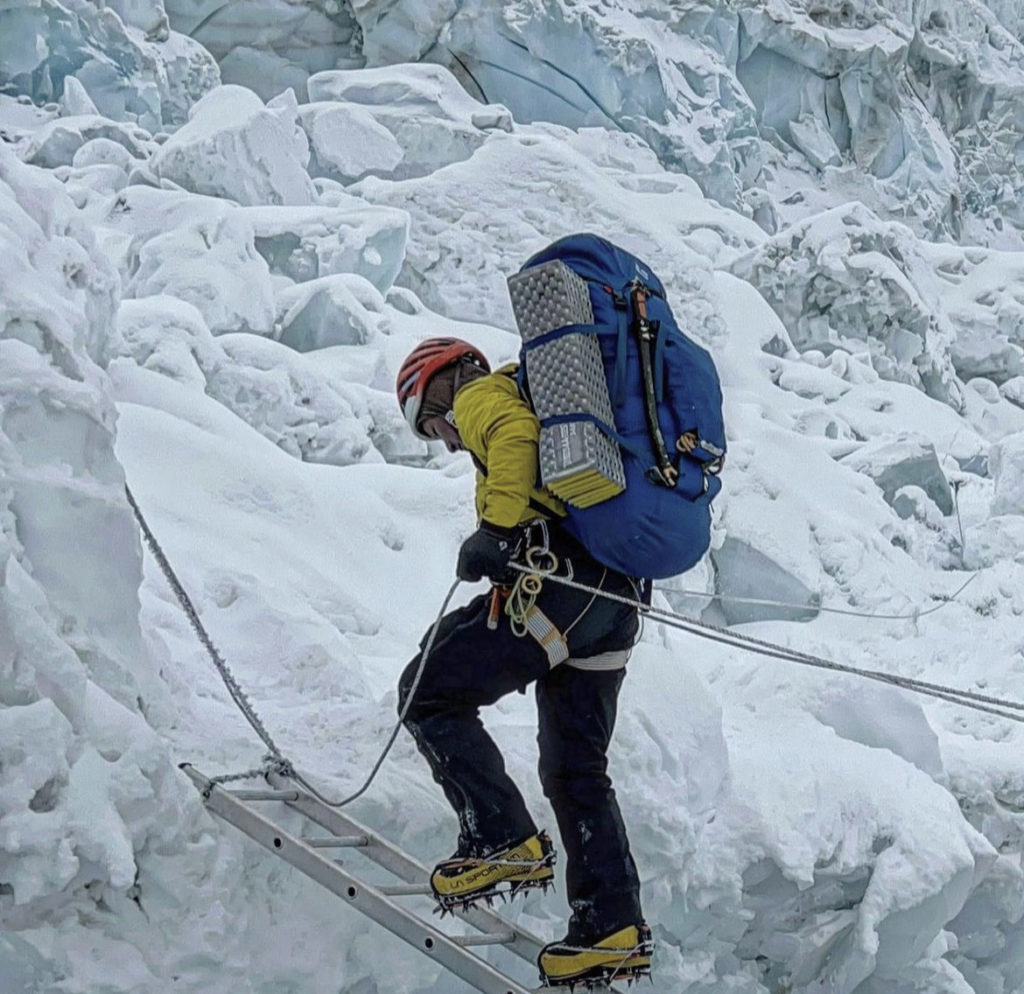



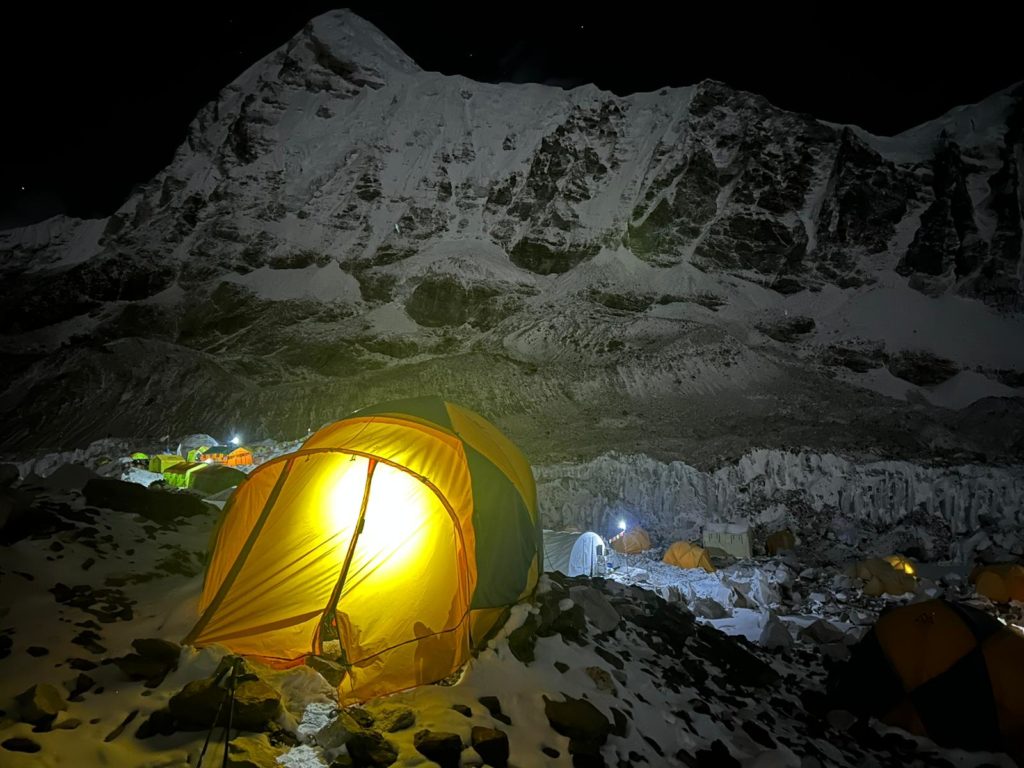
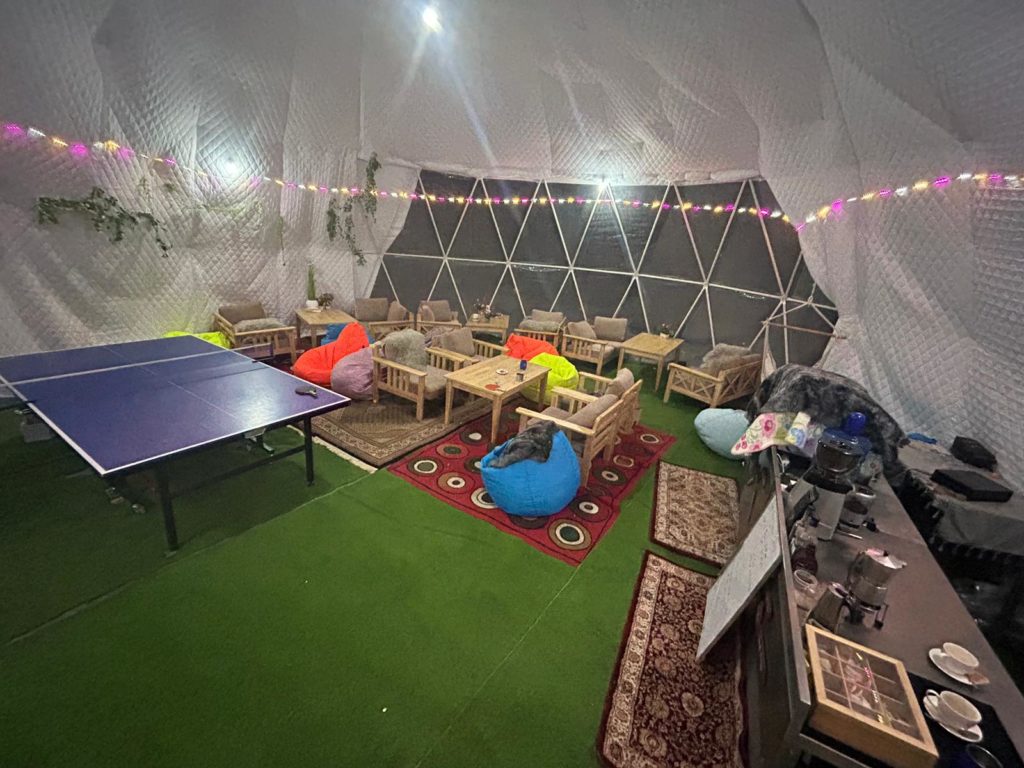
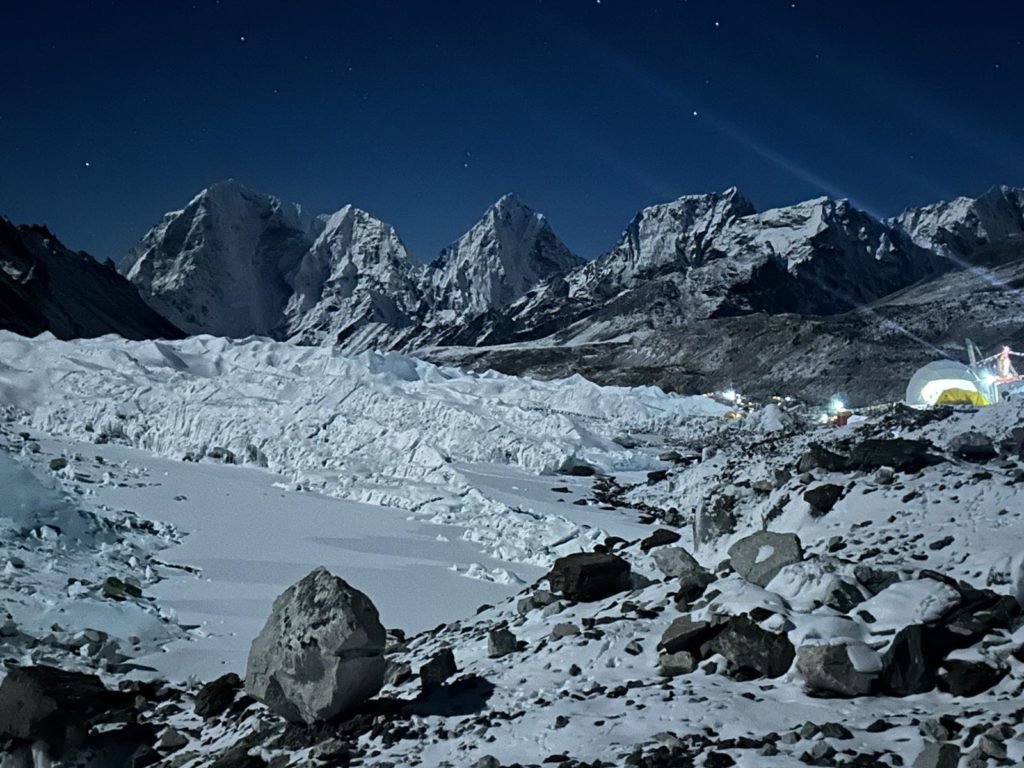
Updates from the Everest Team
Morning of the 5th May
Our teams are doing great, let's check in with where everyone is starting from high to low :)
At Camp 3 we have 18 of our strongest sherpa. They have pivoted their plan of carrying oxygen to the South Col due to high winds plaguing the upper mountain and are instead using the day to build out our camp on the Lhotse Face. They will descend to Camp 2 tonight before heading up in coming days to cache our summit oxygen at the South Col.
At Camp 2 we have Travis who will tag the base of the Lhotse Face today, OT & Guide Casey who made record time coming up from Camp 1 already this morning. They will be joined shortly by Jen and Guide Big Pasang, Sam C & Thu Nang, Lisa B & Guide Prakash, Rajat & Guide Pega, Rohan & Sujan; who are also coming up from Camp 1 to Camp 2.
14x sherpa are also moving up to Camp 2 ferrying loads and will come back down today.
Pre dawn this morning Martin & Sherpa Mingma headed up to Camp 1 and made great time, moving well.
At Base Camp, continuing their rest ad active recovery is our Western Guided Team Climbers, Roberto & Guide Pasang, Ott & Dorjee, Zukey & Vinay, Ludivine and Dawa, Tom & Guide Tomi, Taylor & Guide Naren. We are also looking forward to welcoming back to EBC after their dropbacks, Matt B & Julie McK with Guide Tendi.
In Lukla, Robert J, Kevin C & Damian M are enjoying the thicker air on a dropback. We will welcome them back to camp in coming days.
The weather has been sunny and clear but the jet stream is currently over the upper mountain so winds are high for the next 4-5 days.
Cheers
CTSS Team
Second Wave of Second Rotations
3rd May
We've been having fun at Base Camp as we rest between rotations while we let the red blood cell count increase. Lisa B held a hilarious trivia day, which was supposedly "international" but debate is that she subconsciously skewed it in favour of the Brits with Ben S and Schuyler E taking home the gong!
Speaking of winners; training for the annual CTSS table tennis tournament is on, and everyone is getting pretty good. The Sherpa in particular have been putting in the most time at the practice table so we'll see who takes home the Ping Pong Champion jacket this year.
With the weather now clearing, and clear night skies, we return our focus to the mountain. Let's give you an update of where everyone is:
Before dawn this morning;
Travis & Guide New Tendi
Jen & Guide Pasang
Kirstie & Guide Anup with Rob G and Guide Kami
Sam C & Thunang
Lisa B & Guide Prakash
Rajat & Guide Pega
Rohan & Guide Sujan
climbed through the icefall and are at Camp 1 starting their second rotation, the plan will be to tag Camp 3 over the next few days to mark a new high point ahead of their summit bids. We can expect them to be out of camp for 4-5 nights.
Meanwhile;
Neil F & Bir Bhadur have done an acclimatization climb into the icefall and are returning to Base Camp to rest, our Western Guided Team alongside Roberto and Guide Pasang are ladder training and skills training and Zukey & Guide Vinay, Kevin & Guide Ashish, Ott & Guide Dorjee are doing an active recovery/acclimatization hike to Pumori Camp 1.
Tom L with Ellie and Guide Tomi are returning from their rest in Kathmandu and we are looking forward to welcoming them back to Base Camp.
Slightly below Base Camp;
Mark Postle, Julie McK & Guide Tendi are in Pheriche and they will come back to Base Camp in coming days.
Cheers
CTSS Team
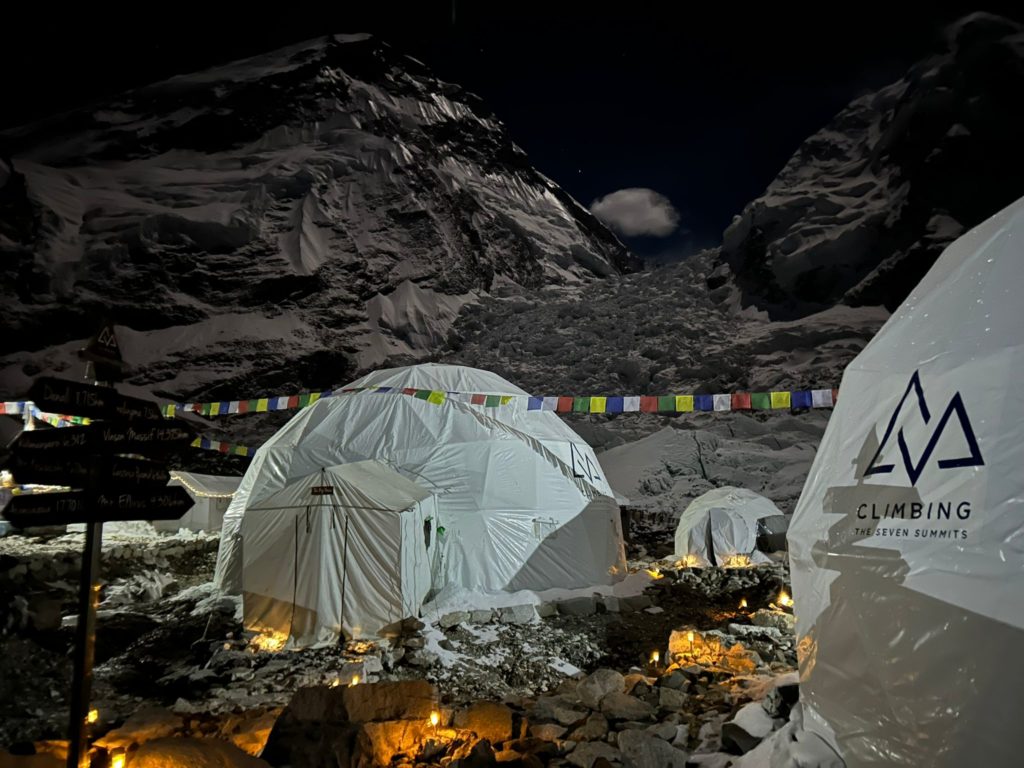
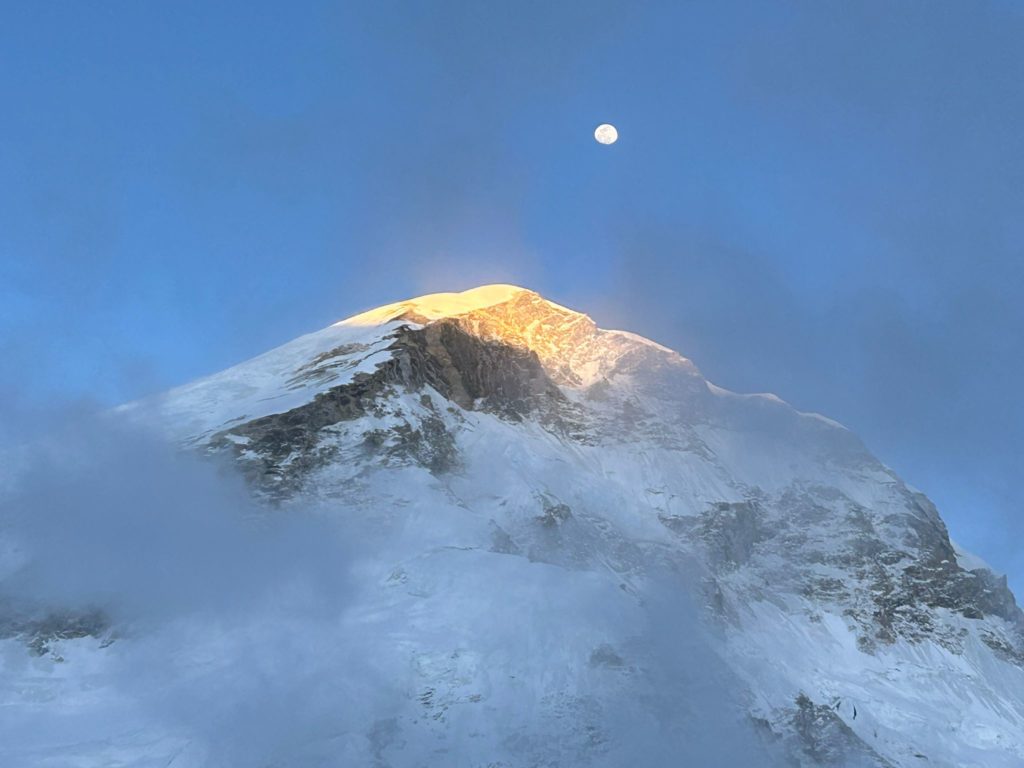
 e
e